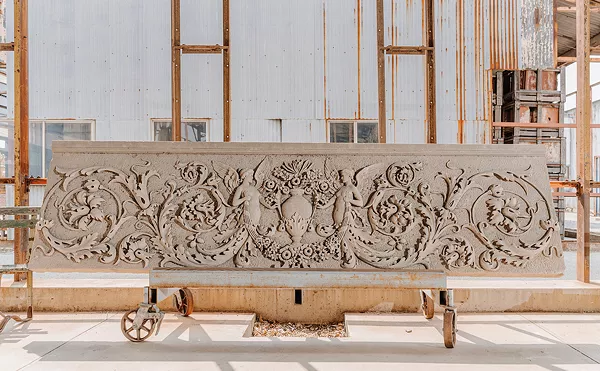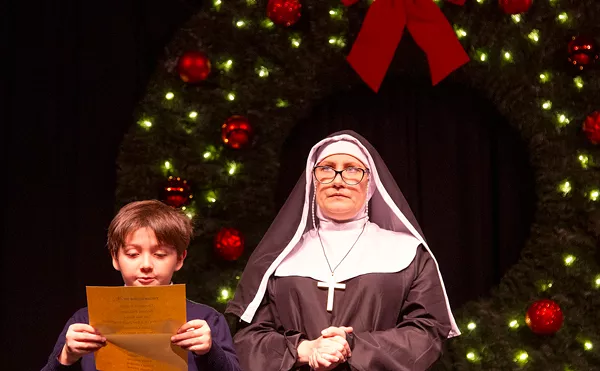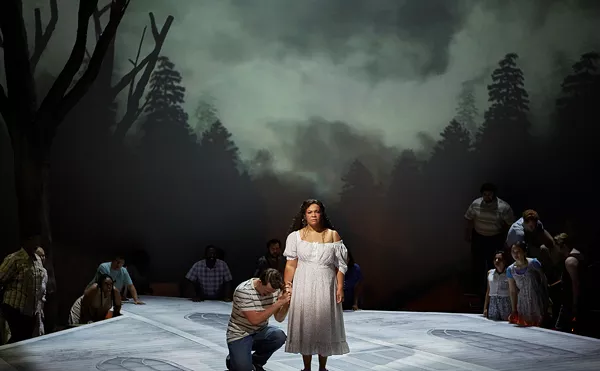Still, training actors means teaching them not only to draw from their own experiences but to imagine the inner lives of people very different from themselves. To his credit, director Bill Whitaker has drawn remarkable work from junior Anne M. Erickson as Marie, whose brave and multilayered performance belies her age.
When we first meet the couple, Marie is piling verbal abuse on her husband in a manner so shocking it's comical. Bruce responds in a passive-aggressive manner, with a detached grin that dismisses her anger. His patronizing "darlings" are apparently his way of getting back at her for throwing out his beloved old typewriter, the symbol to her of all that she hates about him. She decides to leave him, and, in story-theater style, the characters narrate the actions leading up to the moment she tells him.
There's a lot of talk about sickness and people looking at their own feces and vomit; Shawn's writing, though honest, isn't always subtle. In a seemingly endless party scene, we see Bruce's flirting and his own insidious but equally hurtful form of abuse. The party scene also serves to put the relationship in a larger social context, where we see other couples having equally hard times communicating.
Shawn apparently meant the play to be a nonjudgmental presentation of both sides of a troubled relationship, but because of the casting -- and, to some extent, the writing -- the production is only half successful. Erickson is so much stronger than her counterpart, Barrett Graves as Bruce, that the play becomes one-sided in her favor. Although Marie's actions may be horrible at times, Erickson lets us understand her; Graves' one-level performance makes it hard to work up any sympathy for him or see things from his point of view, even when he's doing the narrating. Marie's claims that Bruce is a pathetic pig and a turd seem to be not just opinion but fact.
What makes Shawn's play interesting is how he subverts the playwright's normal use of subtext. Instead of portraying the anger seething under the surface of polite conversation, Shawn gives Marie mouthfuls of invective that hide the desperate longing for love underneath. Just as every "I love you" can mean something else, so can "I hate you." If there's any hopeful message, it's that we're all just looking for love, for someone to listen to us and put their arms around us and say, "I know," as happens with another couple in the party scene, the only warm human contact we see all evening. Ultimately Marie breaks through Bruce's smug defenses, and he fully understands her intention to leave. He's finally heard her, and, strangely, this seems to cause Marie to have a change of heart. All she wanted, it appears, was acknowledgment, to be listened to.
The ensemble does fine work in the party scene, where Pirronne Yousefzadeh stands out from the crowd delivering a thematic speech in nice comic style. The simple gray-and-white set is designed by Justin Barisonek, and the lighting design by Kathryn Foresman delineates the playing areas and time changes with cinematic smoothness.





